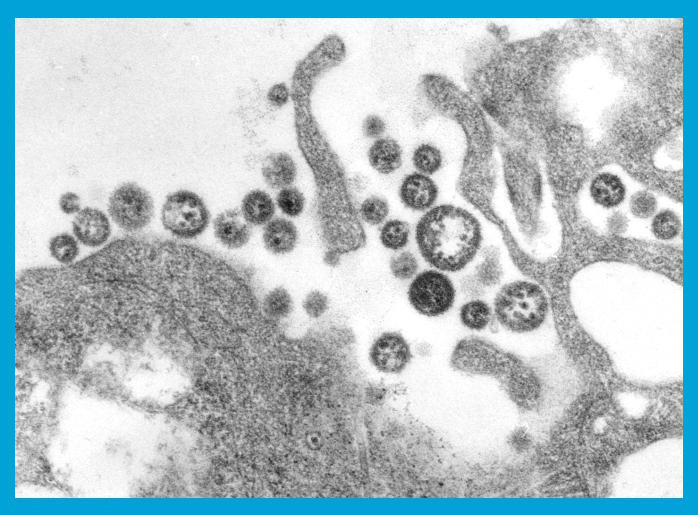July 07, 2018

Eighty percent of meat in US supermarkets carries resistant bacteria. The Environmental Working Group (EWG) has published an analysis of federal inspection data in the United States. They report that antibiotic-resistant bacteria were present on almost 80 percent of supermarket meat in the United States. Rates reported by the EWG are higher than those of the US Food and Drug Administration (FDA). The watchdog group has also published a guide on how to avoid meat with superbugs and has sent a letter to the FDA asking for interference “to curtail the threat” of antibiotic-resistant bacteria in food. [Environmental Working Group, UPI]
Financial incentives worked: UK doctors prescribed fewer antibiotics. A program by the UK’s National Health Service to reward general practitioners for reducing antibiotic prescriptions for respiratory tract infections (RTIs) is associated with reductions of three percent (14.6 per 1,000 prescriptions) in the overall rate of prescriptions for RTIs. The greatest reduction seen was in prescriptions for children, which went down six percent. Broad-spectrum antibiotics for RTIs were reduced by two percent. [Pulse Today, Journal of Antimicrobial Chemotherapy, EurekAlert]
Antiviral influenza treatment is being studied to treat Lassa virus. Researchers at the US National Institutes of Allergy and Infectious Disease have recommended Favipiravir for clinical human trials after testing on macaques cleared Lassa virus from the monkeys’ blood and tissue. Every year, Lassa fever infects up to 300,000 people, mostly in West Africa, and 5,000 die from severe symptoms including hemorrhagic fever. An outbreak in Nigeria this year has seen a 25% case fatality rate, with 111 deaths of 444 lab-confirmed cases. Favipiravir requires no refrigeration, and is already approved to treat influenza in humans in Japan. [Emerging Infectious Diseases, Antiviral Research, NIAID Now]
Hepatitis B in low income countries: New inexpensive blood test could help scale up treatment. A new score based on the detection in blood of a viral antigen and a liver function enzyme has been found to have high accuracy in diagnosing hepatitis B virus (HBV) at all stages of infection. At just $20 per test—four to twenty percent of the cost of existing diagnostic methods—the test could help identify patients in need of treatment for HBV infection and reduce the need for liver biopsies and expensive DNA testing. [EurekAlert, Journal of Hepatology]
State government declares an end to Nipah virus outbreak in India. On July 1, with no new cases having been reported in 30 days, the Health Minister of the state of Kerala announced the end of the Nipah virus outbreak, which began with the deaths of two brothers and ended with a total of seventeen deaths out of eighteen confirmed cases. [India Today, The Disease Daily, Thomas Reuters Foundation]
Vaccine developed to lower antimicrobial drug use in pigs raised for pork. A private sector research group in Finland has created a vaccine that protects piglet intestines from lethal bacteria. VTT says that this vaccine will be more effective than antibiotics which have been used for the same purpose because numerous strains of pathogenic bacteria have become resistant to commonly used antibiotics. [VTT Technical Research Centre of Finland]
Village-wide preventive antibiotics reduced meningitis infections by 60% in Niger study. In villages with no access to vaccine to prevent Neisseria meningitidis serogroup C (NmC), a three-arm study was carried out to compare epidemiological outcomes following notification of a suspect case of meningitis. Seventeen villages received no prophylactic medication (standard care in the region), while the others received single-dose oral ciprofloxacin for household contacts (17 villages) or single-dose oral ciprofloxacin for all residents (15 villages). There was no statistically significant difference between the first two groups, but there were 60% fewer cases in the villages where all residents received chemoprophylaxis. As with the study published two months ago in New England Journal of Medicine, commenters reflecting on the results wonder if the future antibiotic resistance brought about by mass chemoprophylactic dosing outweighs the benefit of reducing the attack rate of the pathogen. [Healio, PLoS Medicine]
Argentina: mph(A) resistance gene found in twelve clinical isolates of Salmonella typhimurium. The potential for horizontal transfer makes the discovery of the mph(A) gene in geographically distant locations worrisome to researchers in Argentina, who analyzed antibiotic resistance traits in twelve S. typhimuriumspecimens in Argentina. In a letter to the editor, the scientists described the first appearance of mph(A) in Latin America. [Journal of Global Antimicrobial Resistance]
HIV PrEP medication is 90% effective but too costly for some. As the price for Gilead Sciences’ HIV-prevention pill Truvada continues to increase, users in the US are finding it harder to pay for the pill. Also known as preexposure prophylaxis or PrEP, Truvada now costs up to $2,000 for a 30-day supply. Price isn’t the only barrier. There are geographic, racial, and ethnic variations in rates of HIV and use of PrEP. The southern US has more than fifty percent of new HIV diagnoses but only about one third of new PrEP users. [NPR Health, Kaiser Health News]
Photo of Lassa virus particles by C. S. Goldsmith (Centers for Disease Control and Prevention)











